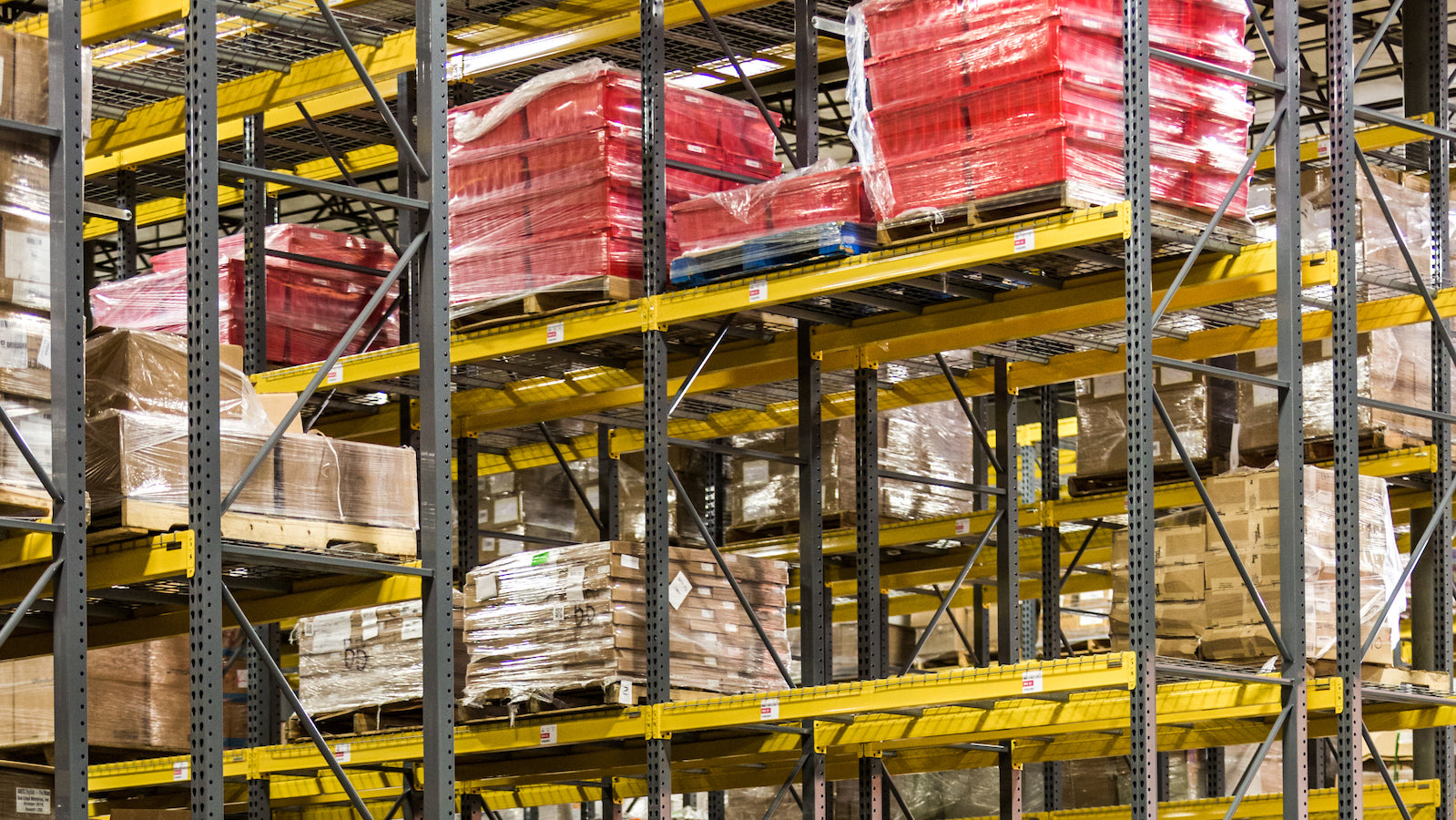Table of Contents
** Minutes
What is wholesale inventory management?
Why is wholesale inventory management important for your business?
5 key benefits for any wholesale business
What makes a good wholesale inventory management system?
How ShipBob can help with your wholesale inventory management
Wholesaling — or buying goods from manufacturers that you then sell to other businesses — can get very complicated.
While B2B ecommerce has the potential to be very profitable, large amounts of goods make it easy for logistics to get out of hand.
Effective wholesaling that’s easy to manage and that makes money starts with excellent wholesale inventory management.
With solid wholesale inventory management practices in place, your business is in a much better position to procure enough inventory, fulfil orders on time, and thrive in your retail partnerships.
In this article, we will define wholesale inventory management, discuss why it is essential when dealing with wholesale inventory, what are the key benefits of having a good system in place, and provide actionable tips to get started.
What is wholesale inventory management?
Wholesale inventory management refers to the process of acquiring, storing, and tracking B2B goods.
While it is crucial for a business to manage all its inventory, wholesale inventory management specifically focuses on all the activities related to goods that a business purchases from manufacturers and subsequently sells to another business, retailer, or wholesaler.
Wholesale inventory management includes a variety of activities, such as:
- Submitting purchase orders (POs) for new wholesale inventory
- Calculating reorder points, economic order quantities (EOQs), and timing inventory replenishment
- Inventory control measures such as optimising storage
- Logging inventory received from the manufacturer
- Tracking wholesale inventory levels
- Performing regular wholesale inventory audits
Why is wholesale inventory management important for your business?
Wholesale inventory management is a key function for any business that buys and sells goods on a regular basis.
In order for every other supply chain function to run smoothly — including order processing, warehouse management, fulfilment, shipping, and last-mile delivery — wholesale inventory must be well-regulated, in-stock, and properly tracked.
If there are issues with inventory counts, lost or damaged inventory, or timing, it can lead to issues like overstocking and shortages that grind the entire supply chain to a halt.
Good wholesale inventory management, on the other hand, improves visibility throughout the supply chain and ensures that the movement of goods is smooth and streamlined. This naturally improves productivity and cuts costs and lead times across your operations.
“We have a Shopify store but do not use Shopify to track inventory. In terms of tracking inventory, we use ShipBob for everything — to be able to track each bottle of perfume, what we have left, and what we’ve shipped, while getting a lot more information on each order. The analytics are super helpful.
We download Excel files from the ShipBob dashboard all the time and use them to analyse everything from cancellations, to examining order weights, to checking on whether ShipBob is shipping orders on time. Even the way their warehouse receiving orders (WROs) work for sending inventory is very straightforward.”
Ines Guien, Vice President of Operations at Dossier
5 key benefits for any wholesale business
There are a number of ways that businesses can benefit from managing their inventory properly. Here are 5 of the top benefits of effectively managing wholesale inventory.
Knowing what’s in stock at all times
When you perform inventory counts regularly and have clear access to your inventory information, it is much easier to know how much of which SKUs you have on hand at any given moment.
Having an accurate sense of stock levels reduces your risk of overselling items you’re run out of — and since you know what to reorder and when, you will also minimise stockouts and backorders.
Centralised access to sales order details
Effective wholesale inventory management makes it easier to access all your sales order details in one place, which is particularly useful in multichannel retailing.
This helps consolidate wholesale order information and makes it available to the parties that need it, so that your business can accurately process orders, minimise the risk of double or missed entries, and avoid fulfilment and shipping delays.
Real-time inventory and order visibility
With the right inventory management software (or IMS) in place (more on this below), you can access real-time information on inventory levels and how orders are progressing through the supply chain.
This visibility enables a new level of coordination between functions and teams, detect inventory receiving delays and exceptions, and reorder inventory at the right time to meet customer demand.
Making accurate predictions based on data
Wholesale inventory management involves keeping track of historical and current inventory data. This data can help you make accurate predictions on future demand, and plan your procurement accordingly.
For example, if certain SKUs see consistently high inventory turnover during a specific season year after year, you can use that data to plan ahead for increased demand when the season rolls around next year.
Saving time and improving accuracy with automation
Wholesale inventory management software allows you to automate different processes in your inventory management, helping you save time and improve accuracy.
The right software will provide automatic stock updates, and let you set reorder notifications so that you can maintain optimal inventory levels in your warehouses.
You can also automatically sync order and inventory data across all channels to get the most up-to-date inventory counts (helping you avoid stockouts and backorders).
What makes a good wholesale inventory management system?
Your inventory management system will make or break your wholesale inventory management operation — so when evaluating an IMS (whether you sell DTC, B2B, or both), you should carefully assess whether the system is capable of streamlining their operations.
Here are just a few features to look for in a wholesale inventory management system.
Multichannel integration
The right wholesale IMS will be able to integrate not only with your existing tech stack, but also with multiple sales channels. This way, inventory data is automatically synced across all channels, and all sales order details are accurately collected in one place.
This speeds up order processing and fulfilment while minimising issues related to missing information, delayed orders, or entry mistakes.
Since inventory for all sales channels are managed through the same system, it also ensures that you don’t accidentally oversell inventory on one channel and stock out your entire inventory.
Real-time inventory management
An IMS worth its salt will have built-in real-time inventory management capabilities to let you track inventory movement and levels at any moment.
This lets you see exactly where inventory is at any given time and how much of it is available at any given location, allowing you to make quick and accurate strategic decisions.
For example, with real-time inventory visibility, you’ll immediately realize that you’re running low on inventory, which enables you to reorder right away and avoid stockouts. With period inventory counts, you very well might miss the ideal reorder window.
Reorder point notifications
Modern wholesale inventory management systems also enable you to implement smart warehousing strategies, such as setting automated reorder point notifications. With these set up, you’ll get automatic notifications when each SKU’s stock levels reach reorder points.
This helps you to stay on top of your procurement and ensures that you never miss inventory reorder points again.
Accurate forecasting
Being able to make data-driven decisions and plan for the future is the essence of good inventory management. As such, your wholesale inventory management solution should come with robust forecasting features to help you plan ahead for cost and operational efficiency.
Using your IMS, you should be able to make accurate predictions based on previous sales data, current sales performance, and inventory levels. This will help you plan your procurement accurately, so you can always be prepared to meet customer demand without overstocking or understocking inventory.
“Another ShipBob integration I love is Inventory Planner. It saves me hours every week in Excel spreadsheets, and I can raise a PO in minutes when it used to take me hours. For every order I placed for years, I was ordering too much or not enough. Between inventory forecasting tools and the ability to auto-create WROs, we don’t have stockouts much anymore. I sleep better at night.”
Wes Brown, Head of Operations at Black Claw LLC
Optimal inventory distribution suggestions
A good wholesale inventory management solution should be able to help you with different aspects of your logistics planning, including your inventory distribution.
Ideally, it will allow you to look at inventory levels, warehouse capacity, customer demand, and historical sales performance across multiple warehouses, and provide suggestions on how to optimally distribute your inventory.
Analytics reporting
Last but not the least, your wholesale inventory management software should come with robust inventory analytics features so you can get accurate insights into different inventory management KPIs.
This will enable you to look for areas of improvement and keep optimising your management processes for better results.
“I am a bit of an analytics nerd, so I love the ShipBob dashboard because I didn’t have access to this level of visibility before.
ShipBob’s technology integrates with Shopify and Bold Subscriptions, and it is so cool to see how all the shipments move through the process so quickly and how fast the whole fulfilment process happens.
I also love the ability to see remaining inventory — that’s so huge. Before, we were counting one by one in my house, but that’s being taken care of by ShipBob now.”
Andrea Hamilton, founder of The Finer Things 1920
How ShipBob can help with your wholesale inventory management
If you’re looking to enhance your B2B fulfilment with optimised wholesale inventory management, ShipBob is the distribution partner you need.
ShipBob’s omnichannel fulfilment service allows small business owners to outsource their wholesale inventory management and fulfilment operations, and streamline the entire process using powerful proprietary software.
Using the ShipBob fulfilment suite, you can gain access to robust retail dropshipping and distribution solutions that centralise your inventory and sales order data, helping you improve efficiency and accuracy.
ShipBob’s software offers EDI integrations with many major retailers and major ecommerce sales platforms to help you automate and streamline your multichannel distribution processes.
Customer orders are automatically received from across your sales channels (DTC, B2B, or both) and stock levels are automatically updated. This speeds up the order fulfilment process while preventing overselling and stockouts.
Moreover, you get real-time visibility into your inventory levels and order status, with instant notifications when you’re running low on stock, enabling you to time replenishment perfectly, avoid stockouts, and delight your B2B partners.
Wholesale inventory management FAQs
Here are answers to the most common questions about wholesale inventory management.
Which software is used for inventory management?
Skubana, SAP, and Zoho are some leading inventory management software solutions. ShipBob’s proprietary inventory management software also offers robust features.



